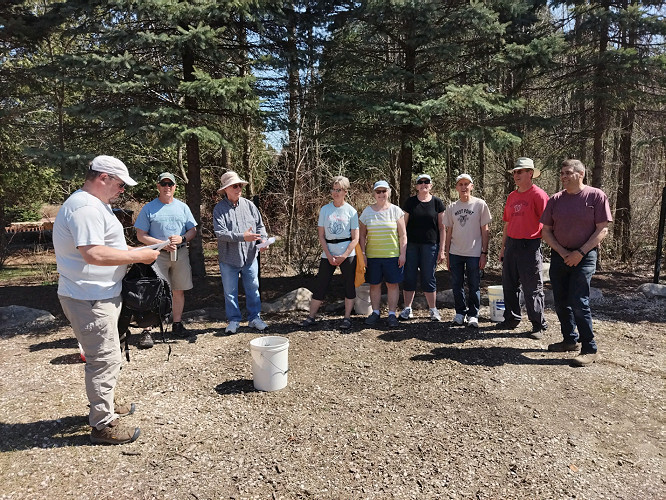
ST&BF at the Christopher Farm & Gardens: Project (Tweety) B.I.R.D. – Area Cancer Patients Experience Healing by Tending to Mother Earth!
(See attached PDF below for related photos)
There has been a growing interest in the benefits of nature to improve the quality of life of individuals dealing with stress, depression, and serious health conditions such as cancer. The positive impact of nature on health and well-being has been examined and supported by many studies over multiple disciplines.
Area cancer patients/ survivors and co-survivors have experienced this “positive impact of nature” from the many visits to the Christopher Farm & Gardens (we’ve visited 57 times since May 2017) and, in return, we have provided some healing to Mother Earth through a variety of projects facilitated by CF&G staff including Spring Restoration Projects, Daisy Days, Fall Seed Collecting, and our newest effort, Project (Tweety) B.I.R.D. Project (Tweety) B.I.R.D. (B.I.R.D. is an acronym for “Bluebird Investigation, Rejuvenation & Discovery) is another collaborative effort between the Sheboygan County Cancer Care Fund’s Survive Thrive & Be Fit Program and the Christopher Farm & Gardens.
The practical objective of Project (Tweety) B.I.R.D. is to help rejuvenate the bluebird population for the betterment of the environment, but this type of activity can have a profoundly positive impact on the well-being, not only for the birds but for is humans as well!
Here is an update on Project (Tweety) B.I.R.D. from project leader and cancer survivor Tom Friedrich from our most recent workday (photos submitted by Mary Schueller):
There has been a substantial decline across the United States in the bluebird population. Bluebirds are considered to be a rather delicate breed and are known to be picky about their nesting habits. So, to help rejuvenate the bluebird population, many people have taken it upon themselves to create “Bluebird Trails” which is what we are doing through this project.
Bluebirds are notoriously picky when choosing nesting cavities. A lot of research has gone into identifying the preferred nesting conditions of bluebirds. We will be using the guidelines recommended by the Bluebird Restoration Association of Wisconsin (BRAW) and the North American Bluebird Society (NABS) to build preferred nesting boxes and locate them in the appropriate habitat.
A benefit of catering to bluebirds is there are other birds that will use the same boxes and prefer the same prairie or open space habitat and edges – Tree Swallows, Chickadees, and House Wrens.
Photo: Tom Friedrichs explains the nesting habits of Bluebirds to a group of cancer patients/survivors and co-survivor volunteers.
Today, we are installing two bluebird nesting boxes and we are gathering the supplies to build more than a dozen more that will be installed throughout the CF&G property as the project progresses.
Photo: Tom Friedrichs (center-right) drives the first pole for a soon-to-be-installed bluebird house while Bruce Becker assists and Robyn (Director of Education and Visitor Experience at the CF&G), Cindy Becker, and Tim Renzelmann look on.
A big part of a Bluebird trail is monitoring, which has a big impact on success, and is quite fun. We will be developing a process that will include weekly monitoring by lead individuals. The monitoring will include opening the access panels and recording important information that will be submitted at the end of the year. There will be opportunities for anyone interested to observe this process with the lead person(s).
Photo: We came upon these four eggs in one of the nesting boxes. Tom observed that the lining of feathers around the nest suggests that these are tree swallow eggs. Bluebird nests consist of grasses, pine needles and thin bark strips. Nevertheless, this clutch (eggs laid during nesting attempt) will be monitored and reported.
We ask, if you are visiting CF&G and not involved in the official monitoring of these nesting boxes, that you observe any activity at a distance with binoculars so as not disturb the birds and prevent them from becoming stressed.
If you are interested in getting involved in this or similar projects, be sure you are on the ST&BF “POP UP” e-mail list (contact Tim for details) and watch for details.
View PDF